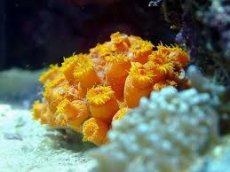New publications
Human excrement has caused coral extinction
Last reviewed: 30.06.2025

All iLive content is medically reviewed or fact checked to ensure as much factual accuracy as possible.
We have strict sourcing guidelines and only link to reputable media sites, academic research institutions and, whenever possible, medically peer reviewed studies. Note that the numbers in parentheses ([1], [2], etc.) are clickable links to these studies.
If you feel that any of our content is inaccurate, out-of-date, or otherwise questionable, please select it and press Ctrl + Enter.

Coral reef experts have solved another puzzle.
Staghorn coral (Acropora palmata) was once the most common reef builder in the Caribbean, but populations have declined by 90% in the last decade, partly due to a disease called white pox, which exposes the coral's skeleton, killing its soft tissue.
The real cause of the disaster has finally been identified - human excrement. This is the first example of a pathogen being transmitted from a human to an invertebrate.
Nine years ago, a group of researchers led by Catherine Sutherland (now at Rollins College, Florida, USA) and James Porter from the University of Georgia (USA) linked smallpox to the bacterium Serratia marcescens, which lives in the intestines of humans and some other animals. In humans, it can cause respiratory diseases and urinary tract infections. Even then, the researchers had good reason to believe that the source of smallpox in corals was wastewater from the Florida Keys, but they had no evidence that the disease had not been transmitted from reef deer, cats, seagulls and other carriers of the bacteria in the Caribbean.
So the scientists had to spend years doing additional research on samples of healthy and diseased corals, other animals, and wastewater from Key West. They added a special enzyme to the samples that destroyed the bacteria's genome. Since the genomes of different strains of the bacteria differ, each strain had a unique pattern of DNA breaks.
After comparing the strains found in the samples, the researchers saw only one match - between the strain isolated from human waste and the strain that causes white pox in corals.
To dispel any remaining doubts, the researchers grew small fragments of healthy corals in the lab and then exposed them to the human strain. After just four days, the healthy corals showed signs of infection.
For the Florida Keys and the Caribbean, where the tourism industry earns billions, the discovery is of great significance. Authorities will no longer be able to avoid upgrading waste treatment systems. Scientists note that since Key West switched to advanced treatment facilities in 2001, there have been no cases of white pox in corals in the area.
